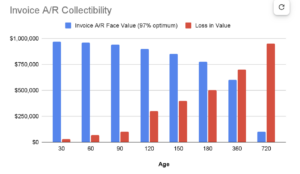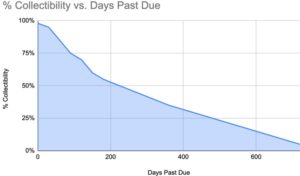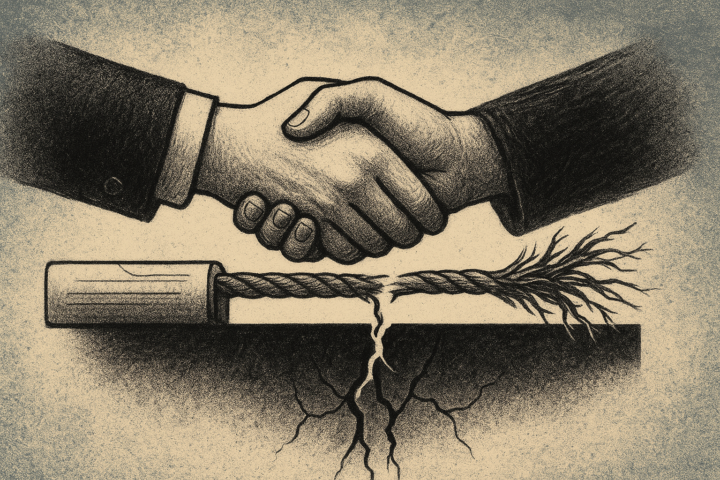If you are in business, there will come a time when you need to enlist the services of a collection agency to help recover your past-due receivables and bad debts. So how do you find the right one?
Commercial debt usually involves significant amounts and often complex circumstances that can lead to financial issues for your business. If the money owed is business debt, Leib Solutions is a highly-rated expert who handles business-to-business bad debt collection.
What is Commercial Bad Debt?
Commercial or business, bad debt is the result of a company (the debtor) that buys services or products on credit terms but fails to pay what is due to the seller (the creditor). As a result, the creditor must then act by suing the debtor or assigning the account to a collection agency to avoid a loss. In the worst scenario, if the creditor does not take quick action, the creditor has to write off the sale as a bad debt. Usually, the two businesses have a binding written agreement, such as a contract or a purchase order.
Corporate Form and Owner Liability
Typically, business debts are the responsibility of the debtor corporate entity and not the liability of the entity’s owners. The corporate (corp. or inc.) and limited liability company (LLC) forms of organization are intended to protect the owners from the business’s debts. Limited partnerships (LPs) also offer protection, although the “general partner” of the LP may be liable for the LPs liabilities. In Partnerships and Sole Proprietorships, the partners or owners are generally personally responsible, so many business people shy away from these forms of organization.
Collateral and Personal Guaranty
When a corporation’s or LLC’s credit is insufficient, a creditor may request a personal guaranty or cross-corporate guarantees from affiliated companies, in which case those parties are also liable. In cases of long-term credit, the creditor will request collateral, such as property or equipment. Having collateral or a personal guaranty is a powerful inducement to pay.
What is Consumer Debt?
Consumer Debt is money owed by a natural person or persons. Consumer debt collectors usually deal with only one person – the debtor – and the debts are usually quite simple, unlike business debts, which can be much more complex. The collection of consumer debt is a very highly regulated activity. See FDCPA Below.
The Fair Debt Collection Practices Act [FDCPA]
The Fair Debt Collection Practices Act protects consumers from unscrupulous collectors looking to use any means possible to collect the debt and penalize those beyond established ethical guidelines. In addition to the FDCPA, many states have enacted versions mirroring the FDCPA, and others go far beyond with even more protection for consumers.
The FDCPA does not regulate Commercial collection agencies. The debt is still commercial if the agreement with your business customer also includes a personal guarantee. A commercial collection agency would be the appropriate entity to place this account for collection since they have special expertise in dealing with businesses and handling these complex matters.
Collection Agency Credentials
While most State and Municipal laws require licensing of consumer collection agencies for each state in which they operate, many State licenses for commercial collection agencies are reciprocal throughout the United States.
Professional commercial collection agencies also follow the ethical guidelines of trade organizations, including the International Association of Commercial Collectors, Inc. (IACC). Membership in the IACC requires compliance with high standards of practice.
Choosing the Best Commercial Debt Collection Agency
When choosing a commercial debt collection agency, you will be concerned about how long they have been in business, their capacity to act quickly and expertly to collect your money, as well as how professionally they deal with debtors since the agency is a reflection of your company.
You also want to ensure your receivables are given the most professional attention. Using an agency that only handles commercial accounts, and understands the types of disputes that occur in business transactions, will ensure the best results. Commercial collection specialization delivers better results for you.
Unlike consumer collections, the best commercial collection agencies are not “dialing for dollar” call center operations. Instead, they employ business and negotiation experts familiar with your business.
Comments on Collection Agency Fees
Never choose a collection agency because of the lowest collection rates, just as you wouldn’t choose a doctor on that criteria. It’s the expected net results -the amount of money you get back – that are important. A professional agency should always do its best, but keep in mind that the fee percentage they keep is their incentive.


